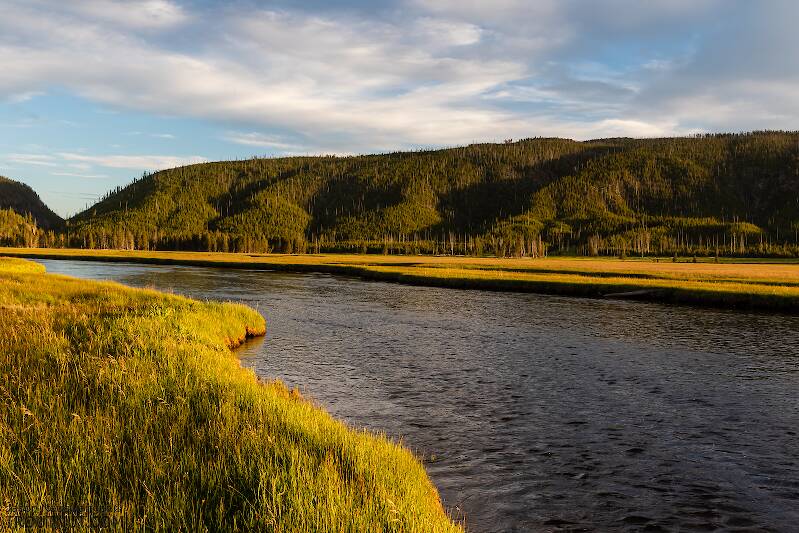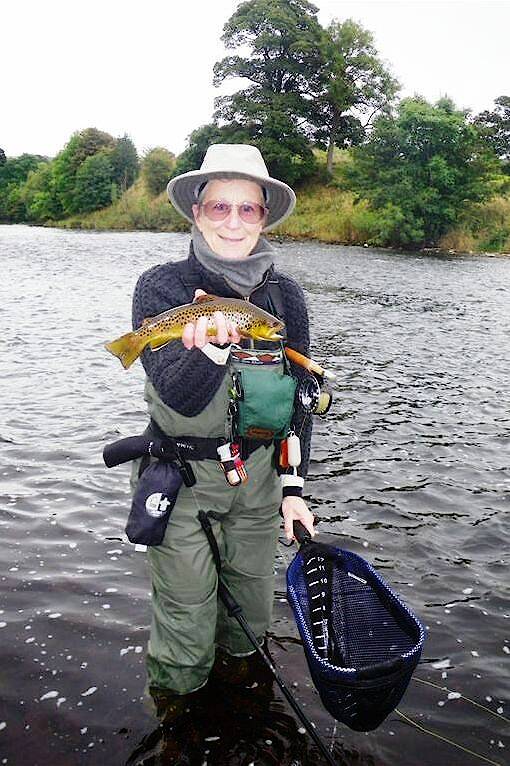
Hex Mayflies
Hexagenia limbata
The famous nocturnal Hex hatch of the Midwest (and a few other lucky locations) stirs to the surface mythically large brown trout that only touch streamers for the rest of the year.
Featured on the forum

Nymphs of this species were fairly common in late-winter kick net samples from the upper Yakima River. Although I could not find a key to species of Zapada nymphs, a revision of the Nemouridae family by Baumann (1975) includes the following helpful sentence: "2 cervical gills on each side of midline, 1 arising inside and 1 outside of lateral cervical sclerites, usually single and elongate, sometimes constricted but with 3 or 4 branches arising beyond gill base in Zapada cinctipes." This specimen clearly has the branches and is within the range of that species.

Troutnut is a project started in 2003 by salmonid ecologist Jason "Troutnut" Neuswanger to help anglers and
fly tyers unabashedly embrace the entomological side of the sport. Learn more about Troutnut or
support the project for an enhanced experience here.
CaseyP on Jun 7, 2007June 7th, 2007, 10:12 am EDT
my generosity has helped send a kid to fishing camp and won me a wonderful assortment of Waterwisp flies. wow.
has anyone on this forum tied such a thing?
any tips on fishing them? says on the box not to use floatant, just one of those powder shakers. can anyone recommend a tiny knot that will make a loop so these little guys can move? how about a Rapala (sp?)knot
they came with a threader-style box. looks necessary!
has anyone on this forum tied such a thing?
any tips on fishing them? says on the box not to use floatant, just one of those powder shakers. can anyone recommend a tiny knot that will make a loop so these little guys can move? how about a Rapala (sp?)knot
they came with a threader-style box. looks necessary!
"You can observe a lot by watching." Yogi Berra
Martinlf on Jun 7, 2007June 7th, 2007, 10:40 am EDT
Casey, below I'm pasting in my unedited notes from when I tied some of these on Waterwisp hooks. I did have some luck with these flies, but haven't used them lately. I hope the notes make some sense and are helpful. Try the Lefty Kreh non-slip mono loop. You can find it on the internet, but check to be sure you have a reputable site and that you are tying it exactly as described. The Orvis knot site may have it. Frog's Fanny is a great floatant to use on these if you have CDC wings.
Waterwisp Tying Tips
Start with hook in standard position in vise and do wraps from middle up to the bend of the hook. Reposition hook with eye in vise and point of the hook to your right. Mount wing below bend of hook on the inside. Start the tie in well below where you think it should end up; this will help leave room for hooking. Be sure the wing slants back towards the eye: after initial tie in, use thread to pull the CDC to the inside of the hook bend and make a wrap or two of thread between the wing and the hook shaft, creating a mini-thread dam, then finish with normal wraps around. Oiler puffs are easily manipulated if you have them, but stripped CDC works. Avoid anything with a stem.
Cut hackle barbs from near tip to facilitate tie off. Tie in hackle at the base of the CDC clump. Immediately below make a ball of dubbing, making two wraps around the shaft, then a crossing wrap at the base of the wing to help set the hackle more parallel to the water. Wrap hackle, tie off, advance thread, dubbing some if you feel it is necessary. Reposition hook to normal position, tie in microfibbet tails, and wrap to end, dividing them on either side of the eye. Do not split them with wraps, though. Dub rest of body, and tie off in front of the tails, just at the eye, with single half hitches. Apply a drop of cement. Go back and cut out a small wedge of hackle just below the hook tip to facilitate hooking. Preen.
Waterwisp Tying Tips
Start with hook in standard position in vise and do wraps from middle up to the bend of the hook. Reposition hook with eye in vise and point of the hook to your right. Mount wing below bend of hook on the inside. Start the tie in well below where you think it should end up; this will help leave room for hooking. Be sure the wing slants back towards the eye: after initial tie in, use thread to pull the CDC to the inside of the hook bend and make a wrap or two of thread between the wing and the hook shaft, creating a mini-thread dam, then finish with normal wraps around. Oiler puffs are easily manipulated if you have them, but stripped CDC works. Avoid anything with a stem.
Cut hackle barbs from near tip to facilitate tie off. Tie in hackle at the base of the CDC clump. Immediately below make a ball of dubbing, making two wraps around the shaft, then a crossing wrap at the base of the wing to help set the hackle more parallel to the water. Wrap hackle, tie off, advance thread, dubbing some if you feel it is necessary. Reposition hook to normal position, tie in microfibbet tails, and wrap to end, dividing them on either side of the eye. Do not split them with wraps, though. Dub rest of body, and tie off in front of the tails, just at the eye, with single half hitches. Apply a drop of cement. Go back and cut out a small wedge of hackle just below the hook tip to facilitate hooking. Preen.
"He spread them a yard and a half. 'And every one that got away is this big.'"
--Fred Chappell
--Fred Chappell
CaseyP on Jun 8, 2007June 8th, 2007, 3:01 am EDT
thanks,Louis. this is obviously a winter project!
"You can observe a lot by watching." Yogi Berra
Martinlf on Jun 8, 2007June 8th, 2007, 3:17 am EDT
I did find them harder to tie than standard flies. Let me know if you find some easier approaches.
"He spread them a yard and a half. 'And every one that got away is this big.'"
--Fred Chappell
--Fred Chappell
Quick Reply
Related Discussions
Topic
Replies
Last Reply
Re: I forgot how to tie on a sack of egg row (salmon) to a hook, can anyone help?
In General Discussion by Dddhart
In General Discussion by Dddhart
2
Oct 8, 2011
by Sayfu
by Sayfu
6
Sep 11, 2020
by Martinlf
by Martinlf



